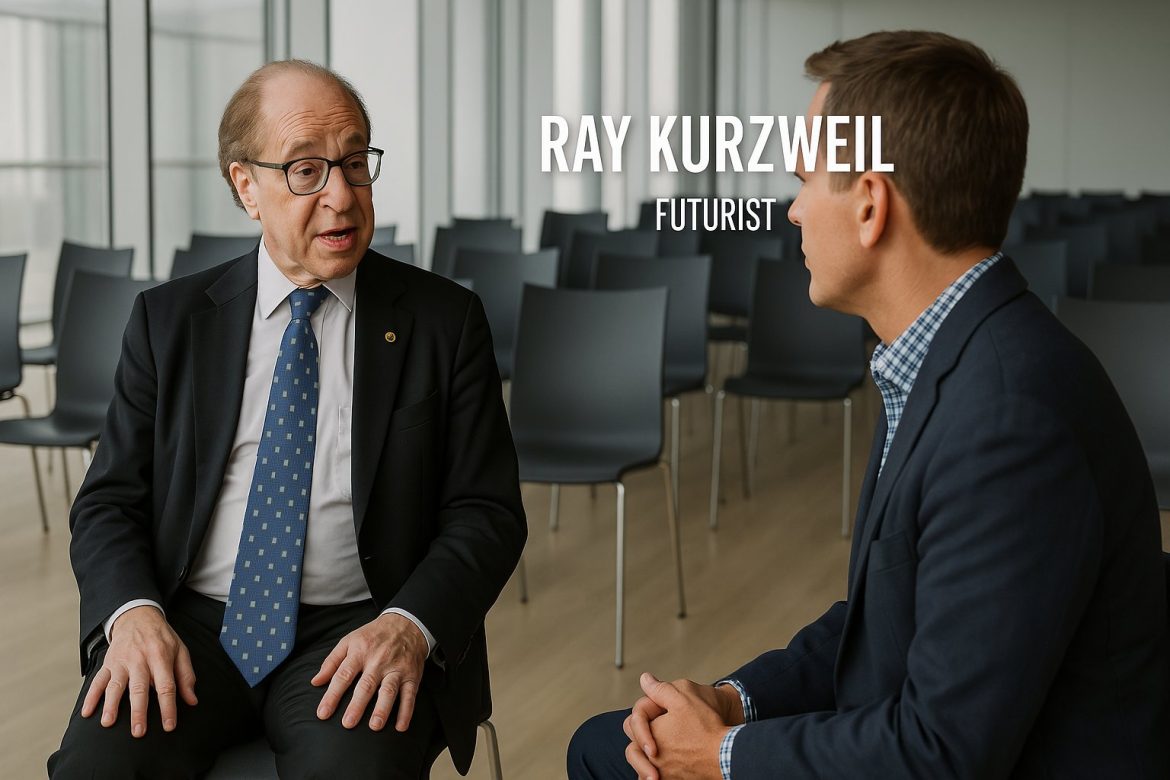The Shift to a Virtual Future
Imagine a world where everything you need—food, clothing, even a glass of champagne—exists not as physical objects but as digital files, downloaded and printed at will. This isn’t a distant sci-fi fantasy but a vision of the near future, according to Ray Kurzweil, a renowned futurist and author of How to Create a Mind. Hired by Google to decode the intricacies of human thought, Kurzweil predicts that by the 2020s, much of our lives will shift into the virtual realm. From shopping to socializing, the boundaries between the physical and digital worlds are blurring, driven by technologies like 3D printing and virtual reality (VR). This article explores his bold predictions, their implications for how we live, and the deeper questions they raise about value, identity, and even spirituality.
Virtual Shopping and 3D Printing
Kurzweil envisions a future where physical stores become relics, replaced by virtual storefronts. By the 2020s, he suggests, most products—clothing, instruments, even food—will be information files you can download and print at home using advanced 3D printers. Already, bands play 3D-printed guitars, and designs for everyday items can be emailed across the globe. Open-source clothing files, available for free, could be printed for pennies per pound, tailored precisely to your body via 3D scans and avatars. No more settling for what’s on the rack—your shirt will fit perfectly because it’s made just for you. Online shopping, already booming, will dominate as physical retail fades, with virtual try-ons replacing the need to feel fabric in person.
Virtual Reality: A New Sensual Experience
What about the pleasures of life, like sipping champagne? Kurzweil argues that VR will soon replicate these experiences so convincingly that the brain won’t know the difference. By the late 2020s, he predicts, VR will move beyond screens and headsets, interfacing directly with our neural signals. Imagine sitting across from a friend, feeling their presence, or tasting a virtual meal—all crafted by a computer feeding signals to your brain. Your virtual body could differ from your physical one, letting you swap perspectives with a partner or live as an idealized self. This isn’t just escapism; it’s a redefinition of reality, where the sensual and the synthetic merge seamlessly.
Decentralized Systems and Currency
The shift to virtual isn’t limited to goods—it extends to how we pay for them. Kurzweil points to Bitcoin and similar cryptocurrencies as harbingers of decentralized currencies, unbound by central banks like the Federal Reserve. Payment systems are already going digital, with credit cards, PayPal, and mobile phones replacing cash. Currency, he notes, is a collective agreement, a concept detached from physical anchors like gold. In the future, artificial intelligence could track purchases and adjust accounts instantly, making transactions frictionless. This decentralization mirrors broader technological trends, from the internet’s resilience to solar energy’s exponential growth, promising a world where resources and power are distributed, not hoarded.
The Psychology of Avatars and Identity
In this virtual world, identity becomes fluid. Kurzweil highlights how people already identify with avatars in platforms like Second Life, a trend that will deepen as VR advances. Psychological studies show we internalize these digital selves, and soon, your virtual body could feel as real as your physical one. A couple might swap avatars to experience each other’s perspectives, challenging how we define relationships and empathy. This raises profound questions: if our experiences and bodies can be engineered, what anchors our sense of self? Kurzweil sees this as an evolution, not a loss, of human potential.
Google’s Role and the Quest for Artificial Minds
At Google, Kurzweil’s mission is to build artificial intelligence that understands us better than we understand ourselves. His book How to Create a Mind outlines how AI could move beyond keyword searches to grasp the semantic meaning of every blog post, book, and webpage. Imagine a search engine that converses with you, intuiting your needs from your words and habits. Privacy, a hot topic, remains a priority—Google employs thousands to secure data, aiming to deliver services like self-driving cars or restaurant recommendations without overstepping. Kurzweil insists this isn’t about control but empowerment, though the line between the two can feel thin.
The Value of Information
As everything digitizes, value shifts from physical objects to information. Kurzweil predicts a coexistence of open-source and proprietary forms—free designs will abound, but people will still pay for a hot designer’s latest creation or a blockbuster novel. Music, movies, and books already show this pattern: millions of free e-books exist, yet readers shell out for must-have titles. In a world where 3D printers churn out goods for pennies, value will lie in the ideas and designs people crave, not the materials themselves. This redefines economics, blending abundance with exclusivity.
Technology’s Solutions to Global Challenges
Kurzweil’s optimism extends to humanity’s biggest problems. Decentralized technologies, he argues, will solve crises we fear today. Solar power, doubling every two years, could meet all energy needs within two decades, using just a fraction of the sun’s vast supply. Water purification machines, costing $2,000, can sustain hundreds with clean water from any source. Vertical agriculture will localize food production. These exponential advancements, fueled by nanotechnology and information systems, suggest that worries about resource scarcity miss the bigger picture: technology is racing ahead of geopolitics.
A Spiritual Counterpoint
Yet, not everyone shares Kurzweil’s enthusiasm. The transcript pivots to a spiritual critique, warning of a world where virtual fantasies—echoing ancient demonic influences like Dagon—distract from reality. As data accumulates and AI predicts our every move, some fear a loss of agency, even linking it to biblical prophecies like the “mark of the beast” in Revelation 13. The counterargument is simple: wisdom, not data, is the answer. To prepare for these changes and the promised wealth transfer, check out Greg Lancaster’s book I Will Fight: Ten Strategies to Fight for Your Success Book and Video Series at IWillFightBook.com, where he shares prophetic insights and practical strategies to thrive in uncertain times. Advocates urge an “abiding relationship” with Jesus Christ, offering a free plan at iabide.org to ground people in faith amid digital chaos. This tension—technology’s promise versus spiritual grounding—frames a broader cultural debate.
Balancing Fantasy and Reality
Kurzweil’s vision of 2020 and beyond dazzles with possibility: a virtual store in your living room, a champagne toast in your mind, a currency untethered from banks. But it also challenges us to discern what’s real. Will we master these tools, or will they master us? The spiritual call to “take every thought captive” clashes with a future where thoughts might be engineered. As 3D printers hum and VR headsets beckon, the choice remains ours—to embrace the virtual age with wisdom or risk losing ourselves in its boundless expanse.
Originally Published Aug 24, 2018
See more, related content and articles for this article.




